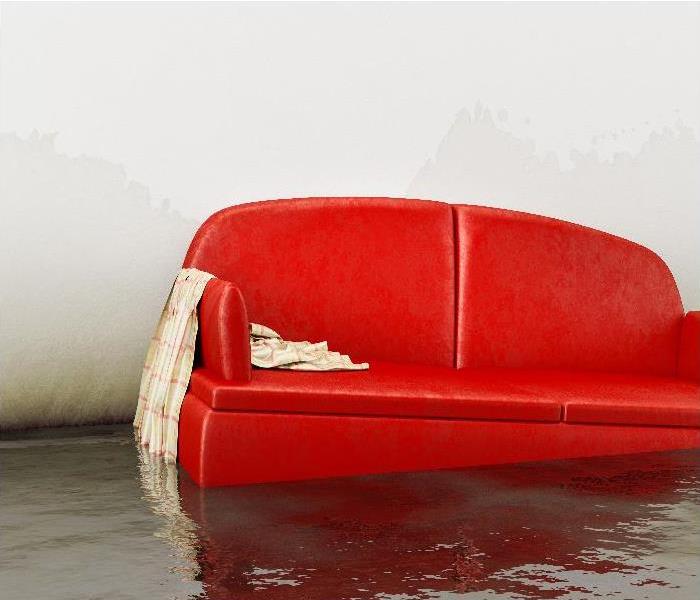We Are Ankle-Deep in Water - Who Can Help Save My Brockton Floors?
7/12/2020 (Permalink)
 You can feel confident depending on SERVPRO of Metro Brockton to restore the function and appearance of the wide variety of floors after water damage.
You can feel confident depending on SERVPRO of Metro Brockton to restore the function and appearance of the wide variety of floors after water damage.
SERVPRO Uses the Water Damage Restoration Industry's Best Practices and Innovative Strategies to Remove Water and Residual Moisture from Residential Flooring in Brockton
When water pours across your Brockton house's floors, you must act quickly to avoid permanent damage. Although floors are designed to shrug off minimal amounts of fluids, as long as someone wipes them up promptly, substantial amounts of water can harm the top layer and percolate through one or more levels to impair the function of the subfloor. If this happens, you have more than a nuisance on your hands--the structure of your home is at risk.
Do All Types of Floors Risk Ruin from Water Damage?
Floors in your Brockton home suffer water damage to different extents. Some kinds of flooring are, in theory, designed to shed water completely. Other floor materials come through a flood of water reasonably well as long as the installation was done appropriately, and maintenance was routine. Water damage can be severe with other flooring choices, and the materials might need replacement. Making the determination requires training and experience with variants in flooring and knowledge of strategies that work well with each type. Since more than one kind of flooring was likely in the water path, professional restorers are preferred as they can evaluate the range of variables.
How Does Moisture Affect Hard Flooring?
Nearly every home has at least one space with hard flooring, and often many rooms feature it as a top layer or substrate. SERVPRO crews are vigilant about evaluating your home's circumstances carefully as the installation of your floors can differ from your neighbors even if they look the same before the damage.
What Are Water Damage Concerns with Concrete Floors?
Generally speaking, a concrete floor in your basement, garage, or other area endures the deluge without significant damage. Concrete is porous and absorbs some water, causing calcium deposits on the surface as the water evaporates. Our crew determines moisture levels and uses best practices as established by the Institute of Inspection Cleaning and Restoration Certification (IICRC) to dry the material. If painted:
• Flaking or blistering can present
• Depending on the paint used, lead could be a hazard, requiring the coating to be removed by specially trained, certified, and licensed technicians
How Do Resilient Tiles Manage Moisture?
Resilient tile is usually made of asphalt or vinyl, installed over concrete. Asphalt tile typically holds tight after water damage, although calcium or waxy substances can deposit on top, needing and responding well to a scrub. Vinyl tiles are more likely to dislodge than asphalt if the water damage was substantial or stood for a time, and the adhesive used in installation can come loose as the concrete pushes moisture out. Vinyl tiles are easier to replace, and attaching new tiles might be more efficient than drying. Other issues with resilient tiles include:
• Possibility of asbestos in the tile materials or glues, which requires remediation by a certified asbestos technician
• If applied over wood subfloors rather than concrete, some or all of the tiles might need removal to dry the wood materials to prevent warping
Are Ceramic Tiles Impervious to Water Damage?
Because of their common use in bathrooms and kitchens, homeowners cannot be faulted for believing ceramic tile shows no effects from water damage. This is true only if the grout has no cracks and is sealed, and if any caulking around showers, tubs, toilets, and along the wall line is in excellent repair. Usually, a wood subfloor underlies ceramic tile, which can warp if wet. Warping can dislodge the tiles, or even crack them in extreme cases. We always check for a damp subfloor, often achieving successful drying from beneath.
What Are the Chances for Laminate and Hardwood Floors to Survive Water Damage?
Laminate flooring does not hold up to water damage well, and nearly always needs removal and replacement. It is an engineered product, and the layers, including the decorative veneer on top, delaminate easily, splitting and peeling apart. Hardwood floors are reasonably resilient, particularly if mitigation and remediation proceed quickly. As with most "tough" floors, the issues arise because the subfloor, frequently plywood, absorbs water that trickles down, warping. The wet subfloor also permits wicking of the water into the hardwood planks and strips, causing cupping and crowning. If mild, the distortion might be sandable before refinishing. Severe deformity can lead to buckling, where the fasteners let go, and the strips or planks come entirely away. Replacement of some or all of the hardwood is occasionally necessary if swift and complete drying of the subfloor does not occur.
You can feel confident depending on SERVPRO of Metro Brockton to restore the function and appearance of the wide variety of floors after water damage. Call us at (508) 690-4690 as soon as possible for the best results.






 24/7 Emergency Service
24/7 Emergency Service